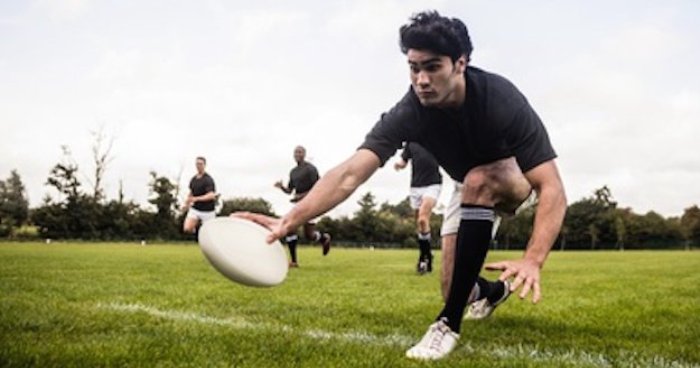Fitness: Conditioning Requirements and Components Defined

Strength can be defined as the ability to exert force in one maximum effort on a resistance in order to overcome that resistance.
Ideally in Rugby, we want to be strong enough so that we can always present more force to a resistance during the course of a game than it can present to us. But maximum strength, by virtue of its short duration anaerobic energy source (adenosine tri phosphate – A.T.P.) lasts only about 30 seconds maximum in a well-conditioned athlete.
Anaerobic Endurance can be defined as the ability to repeat bouts of muscular exertion. It is no good being extremely strong as a Rugby player without having the ability to repeat those bouts of maximum muscular effort many times throughout the duration of a game. How do we do this? By cultivating the other two other parts of the anaerobic energy system, the lactic acid system,and the lactic system.
Lactic Acid is a waste residue caused as glycogen (a type of sugar molecule) is broken down to form A.T.P. The whole process is called anaerobic glycosis. Lactic acid, though, has a drawback that no doubt every rugby player has experienced. It puts pressure on nerve endings and makes arms and legs feel like lead. This anaerobic system supplies energy for all out work bouts lasting between 1 and 3 minutes.
Following such an intense workout, we continue to breathe fast and heavy even though the demand has ceased. The oxygen taken in at this time above resting consumption, is used to replenish our A.T.P. levels. This is the alacticportion of the system, also referred to as oxygen debt.
– In 20 seconds 50% A.T.P. is replenished
– In 60 seconds 87% A.T.P. is replenished
– Within 3-4 minutes, A.T.P. is totally replenished
So what we need to do as Rugby players is to condition ourselves so that we can “push through” the fatigue associated with massive lactic acid buildup by building a tolerance to it. One method is to deliberately create lactic acid buildup with short duration, high intensity activity (like Jingle Jangles, a peripheral heart rate training) and decrease rest intervals.
But first an excellent aerobic level must be established. Any activity that elevates the heart rate to approximately 85% of its maximum level for a sustained period (30-40) minutes, builds the aerobic base. The energy source for aerobic activity is largely free fatty acid (fat) metabolized in the presence of oxygen. More importantly, your recovery rate from intense activity of short duration (anaerobic), is entirely dependent on your aerobic condition. Aerobic conditioning should be done in off-season (long runs, ideally 4-5 miles). As the pre-season approaches, training should then replicate the demands of the game (anaerobic via things as the Jingle Jangle routine). Mami Poker
Power simply defined, is the speed at which a weight can be moved over a distance. We hear descriptions of “speed/strength”, “explosive power”, and “jumping ability”. All of this boils down to power.
Once muscle fibers have been strengthened, we need to find ways to recruit those fibers fast, and transform that strength into a ballistic type of release. Two ways of doing this are:
- Olympic Lifts
By definition of their explosive nature (power clean, snatch) these are the only multi-joint lifts capable of cultivating a neuromuscular response of the IIB fast twitch fibers.
- Polymeric
Probably the single most effective method of increasing explosive power. Sample polymeric workouts are not included here because of their very rigorous nature and potential for injury in the unprepared athlete. Plyometric workouts must be monitored by a person with a good bio-mechanical and practical knowledge of this training technique.
Speed is dictated by two components: stride length and stride frequency. Speed can be increased in most cases, irrespective of genetic factors. Poker Online
